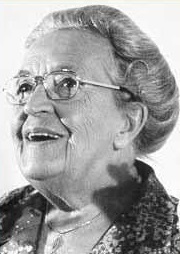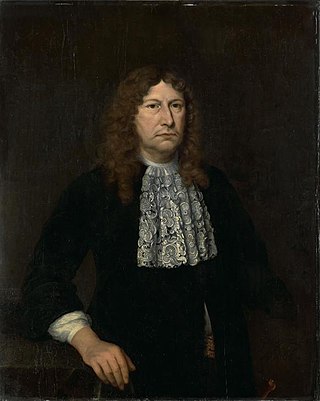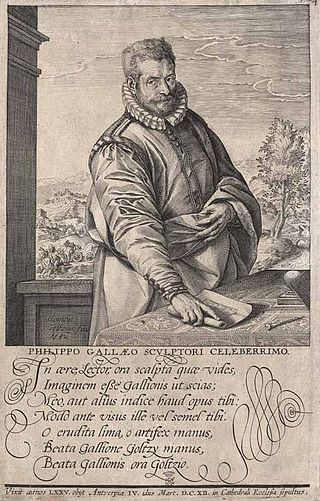Related Research Articles

Demographic features of the population of the Netherlands include population density, ethnicity, education level, health of the population, economic status, religious affiliations and other aspects of the population.

Haarlem is a city and municipality in the Netherlands. It is the capital of the province of North Holland. Haarlem is situated at the northern edge of the Randstad, one of the more populated metropolitan areas in Europe; it is also part of the Amsterdam metropolitan area. Haarlem had a population of 162,543 in 2021.

Camp Westerbork, also known as Westerbork transit camp, was a Nazi transit camp in the province of Drenthe in the Northeastern Netherlands, during World War II. It was located in the municipality of Westerbork, current-day Midden-Drenthe. Camp Westerbork was used as a staging location for sending Jews to concentration camps elsewhere.

Cornelia Arnolda Johanna "Corrie" ten Boom was a Dutch watchmaker and later a Christian writer and public speaker, who worked with her father, Casper ten Boom, her sister Betsie ten Boom and other family members to help many Jewish people escape from the Nazis during the Holocaust in World War II by hiding them in her home. They were caught, and she was arrested and sent to the Ravensbrück concentration camp. Her most famous book, The Hiding Place, is a biography that recounts the story of her family's efforts and how she found and shared hope in God while she was imprisoned at the concentration camp.
In electoral systems, voter registration is the requirement that a person otherwise eligible to vote must register on an electoral roll, which is usually a prerequisite for being entitled or permitted to vote.

Johannes Camphuys was the Governor-General of the Dutch East Indies from 1684 to 1691. Camphuys was born in Haarlem, in the Republic of the United Netherlands.

The history of the Jews in the Netherlands largely dates to the 16th century, when they began to settle in Amsterdam and a few other cities. Their presence has continued to the current era. During the occupation of the Netherlands by Nazi Germany in May 1940, the Jewish community was severely persecuted.

The Dutch resistance to the Nazi occupation of the Netherlands during World War II can be mainly characterized as non-violent. The primary organizers were the Communist Party, churches, and independent groups. Over 300,000 people were hidden from German authorities in the autumn of 1944 by 60,000 to 200,000 illegal landlords and caretakers. These activities were tolerated knowingly by some one million people, including a few individuals among German occupiers and military.
Eindhoven is a municipality and a city located in the province of North Brabant in the south of the Netherlands, originally at the confluence of the Dommel and Gender brooks. The Gender has been dammed off in the post-war years, but the Dommel still runs through it.

PhilipGalle was a Dutch publisher, best known for publishing old master prints, which he also produced as designer and engraver. He is especially known for his reproductive engravings of paintings.
Dutch names consist of one or more given names and a surname. The given name is usually gender-specific.

The Reichskommissariat Niederlande was the civilian occupation regime set up by Germany in the German-occupied Netherlands during World War II. Its full title was the Reich Commissariat for the Occupied Dutch Territories. The administration was headed by Arthur Seyss-Inquart, formerly the last chancellor of Austria before initiating its annexation by Germany.

Abraham Asscher was a Dutch Jewish businessman from Amsterdam, a politician, and a leader of his community who attained notoriety for his role during the German occupation of the Netherlands (1940–1945).
A vow is an oath or promise.
Portuguese in the Netherlands are the citizens or residents of the Netherlands whose ethnic origins lie in Portugal.
The Westerweel Group was a small resistance group with non-Jewish and Jewish members that operated during the Nazi occupation of the Netherlands. Led by a Dutch Christian Joop Westerweel and Jewish German refugee Joachim Simon, the group was initiated in August 1942 and its first objective was to hide a Jewish youth group of "Palestine pioneers" whose members were ordered to be deported to the Nazi Westerbork transit camp. They were Primarily young Jews from Germany and Austria who had fled to the Netherlands after 1933 where they followed an agricultural training to settle in Palestine. When threatened with deportation, the resistance group helped them to find hiding places and some of them were brought to Spain via Belgium and France.
Dutch-Paris escape line was a resistance network during World War II with ties to the Dutch, Belgian and French Resistance. Their main mission was to rescue people from the Nazis by hiding them or taking them to neutral countries. They also served as a clandestine courier service. In 1978 Yad Vashem recognized Dutch-Paris's illegal work of rescuing Jews by honoring the line's leader, Jean Weidner as Righteous Among the Nations on behalf of the entire network.

The Holocaust in the Netherlands was organized by Nazi Germany in occupied Netherlands as part of the Holocaust across Europe during the Second World War. In 1939, there were some 140,000 Jews living in the Netherlands, among them some 24,000 to 25,000 German-Jewish refugees who had fled from Germany in the 1930s. Some 75% of the Dutch-Jewish population was murdered in the Holocaust. The 1947 census reported 14,346 Jews, or 10% of the pre-war population. This further decrease is attributed to massive emigration of Jews to the then British Mandate of Palestine.
The Committee for Jewish Refugees was a Dutch charitable organization that operated from 1933 to 1941. At first, it managed the thousands of Jewish refugees who were fleeing the Nazi regime in Germany. These refugees were crossing the border from Germany into the Netherlands. The committee largely decided which of the refugees could remain in the Netherlands. The others generally returned to Germany. For the refugees permitted to stay, it provided support in several ways. These included direct financial aid and assistance with employment and with further emigration.
Max Windmüller was a German member of the Dutch resistance. He was forced to flee from the National Socialists to the Netherlands with his parents because of their Jewish faith. He joined the Westerweel Group there and saved the lives of many Jewish children and young people. The members of the Westerweel group organized identification papers, hiding places and escape opportunities, especially for German-Jewish children and young people who had fled from Germany. In this group, Jews and members of other faiths worked together to save the Jews from persecution. Such cooperation was not a matter of course in the Netherlands. Windmüller personally saved around 100 young Jews, and the entire Westerweel group saved 393 Jews. In July 1944, the Gestapo stormed a secret meeting of the Resistance group in Paris in which Windmüller and other members of the Jewish resistance were arrested. They were then taken to Gestapo headquarters where they were interrogated and tortured. When the liberation of the camp by Allied troops was imminent, Windmüller was deported from occupied France with the last transport. On 21 April 1945, he was shot by a Schutzstaffel member.
References
- ↑ Vertrokken onbekend waarheen (VOW) on the website of the Centraal Bureau voor de Statistiek
- ↑ 2011 VOW report, ISSN 1877-3028
- ↑ Vertrokken Onbekend Waarheen, De Haarlemse joden in de Tweede Wereldoorlog, by J.J. Temminck, Jaarboek Haerlem 1995, Haarlem, 1996, pages 139–170, ISBN 9060974212